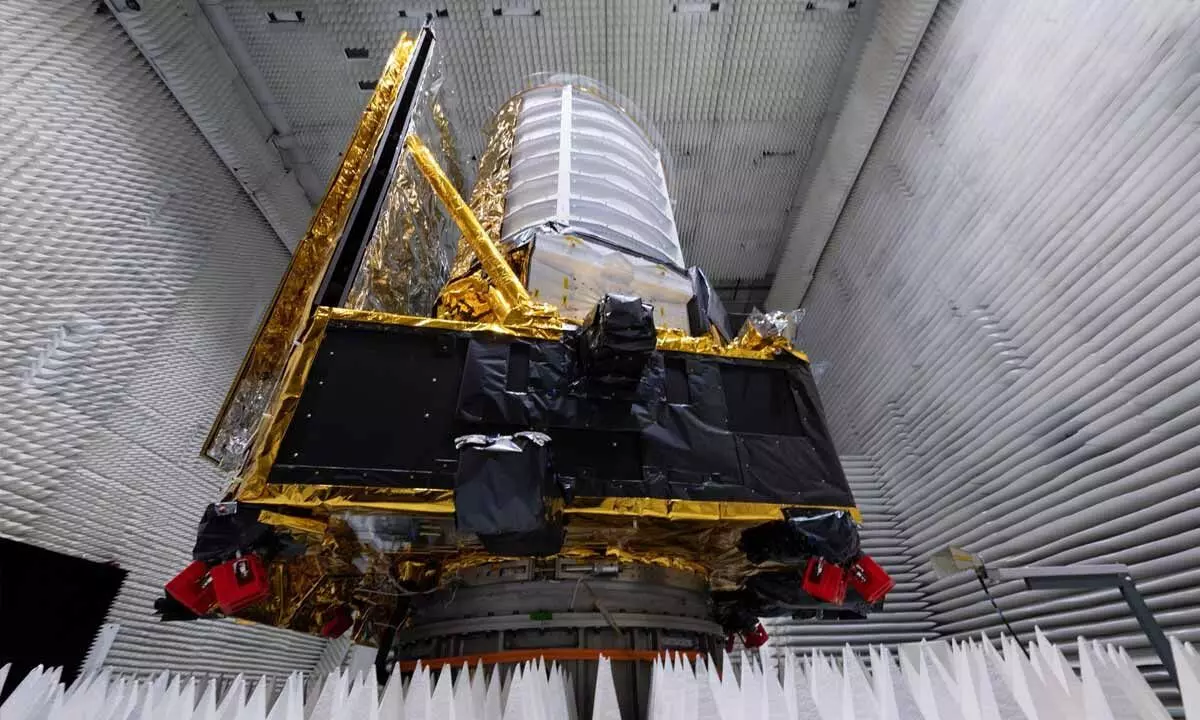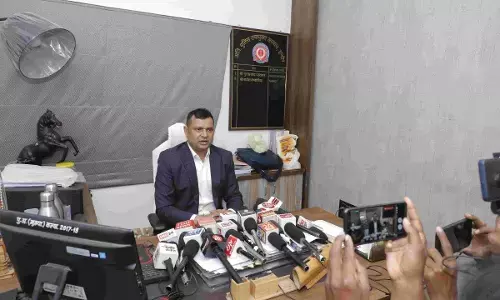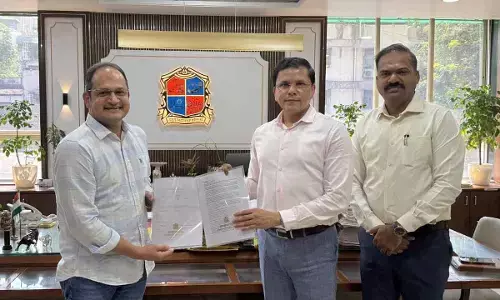ESA telescope gets ready to probe universe's dark mysteries
Share :

ESA telescope gets ready to probe universe's dark mysteries
The European Space Agency's Euclid mission, aimed at probing the "dark side" of the universe -- namely dark matter and dark energy -- has successfully completed the final test before launch in July 2023.
Paris: The European Space Agency's Euclid mission, aimed at probing the "dark side" of the universe -- namely dark matter and dark energy -- has successfully completed the final test before launch in July 2023.
The space telescope will create the largest, most accurate 3D map of the Universe ever produced, observing shapes and movements of billions of galaxies across 10 billion years of cosmic time, over more than a third of the sky.
From this data, Euclid will reveal how the Universe has expanded and how structures have formed over cosmic history, revealing more about the role of gravity and the nature of dark energy and dark matter.
The two-tonne spacecraft, which is 4.7 metres tall and 3.5 metres wide, is a fully European mission -- built and operated by ESA, with contributions from NASA.
It is currently situated at the Thales Alenia Space test facilities in Cannes, France and has successfully undergone electromagnetic compatibility testing.
The test is aimed at ruling out electromagnetic waves that can cause interference with other devices, which in space can have disastrous consequences.
The large test chamber at TAS, called the Compact Antenna Test Range, simulates the electromagnetic environment of deep space, being lined with cones that absorb radio signals and prevent reflections.
To avoid TV or radio interference, the walls of the chamber form a steel Faraday cage, impenetrable to electromagnetic signals from the outside world.
In this radiation-free environment, the team studied the radio signals and electrical noise coming from the various systems on the spacecraft and checked whether they caused any electromagnetic interference with each other.
After completing a few final tests, it will head to Cape Canaveral in the US for a launch in July on a SpaceX Falcon 9 rocket. The $1.5 billion mission is planned to last until 2029.
Woman injured in stabbing attack in Tokyo, suspect at large
Bengal cop booked for murder over mysterious death of woman home guard, SIT to probe case
Staffer recalls horror of 7-kg gold robbery by armed gang in Karnataka’s Hunsur
25-Year-Old Airline Cabin Crew Member Dies At Gurugram Party; Police Begin Investigation















